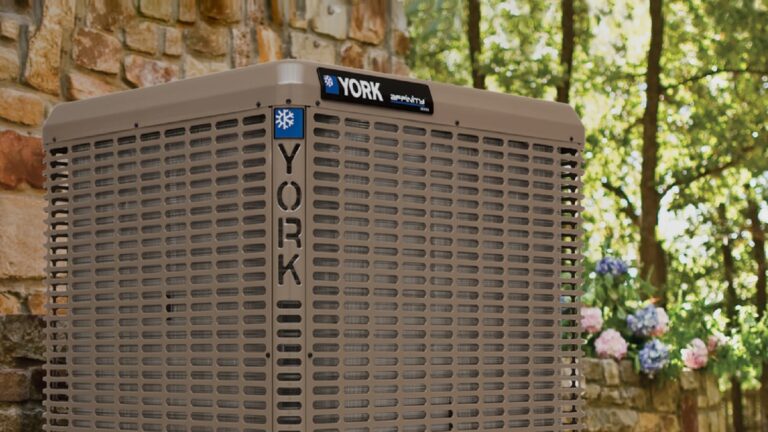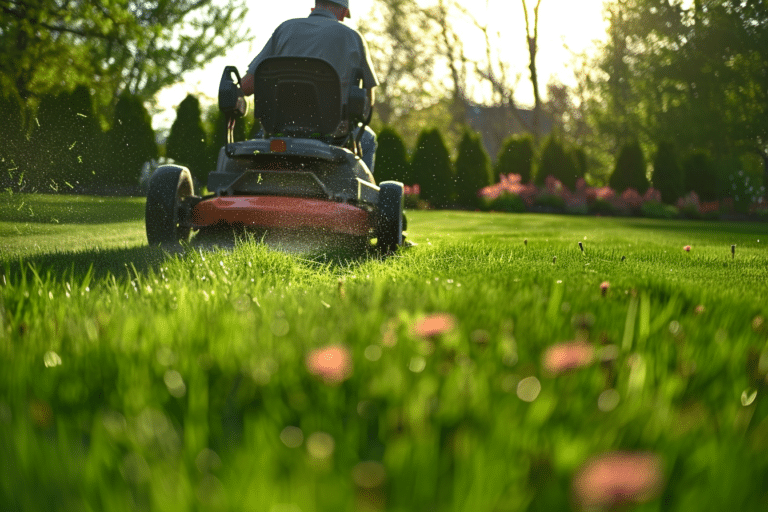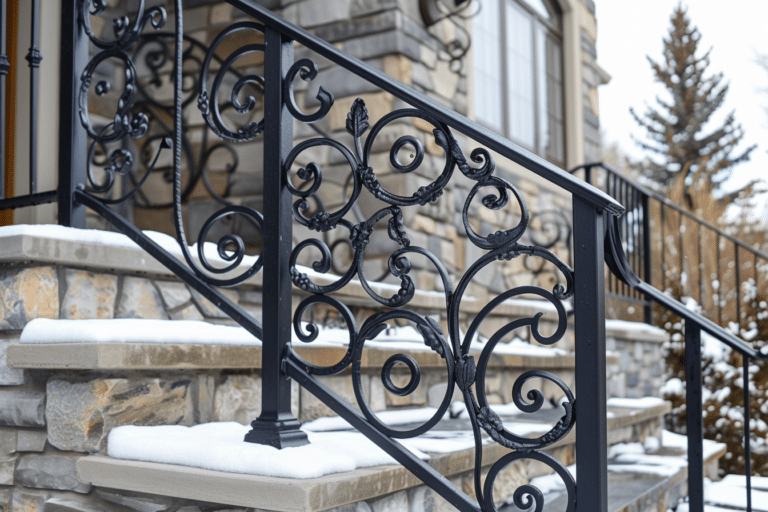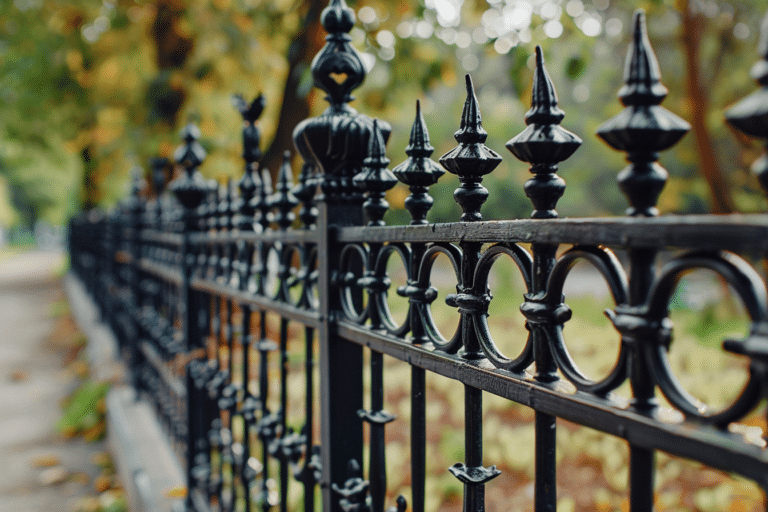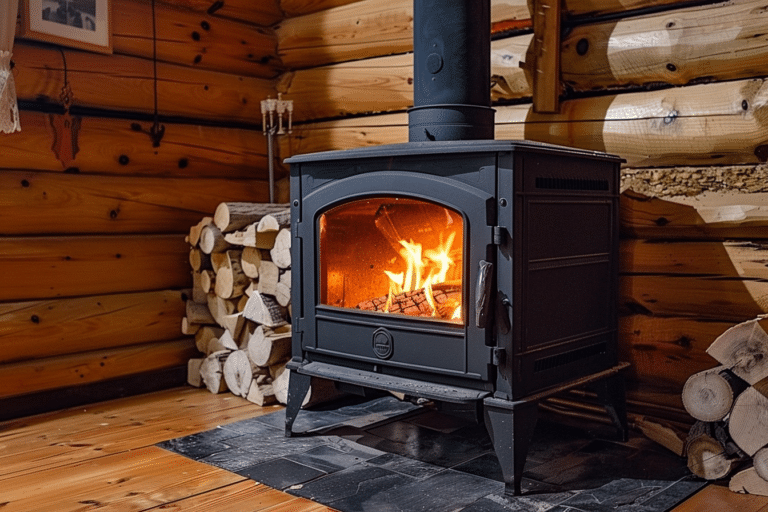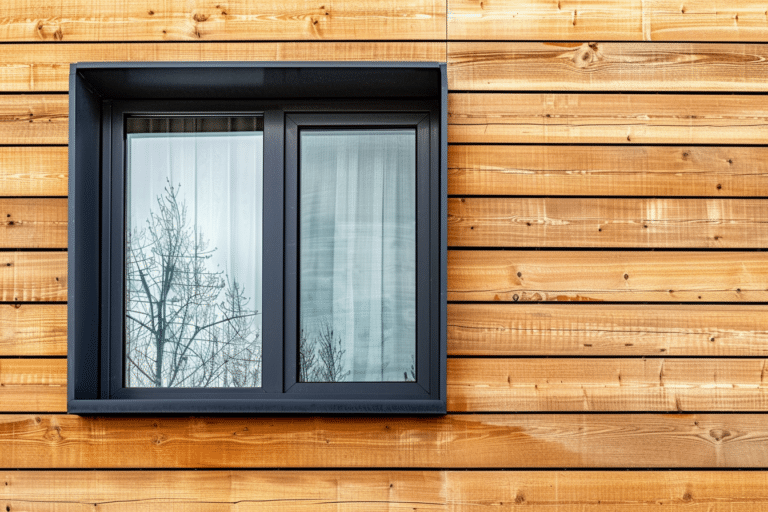Key Takeaways
- Cambria quartz countertops cost $60 to $125 per square foot installed, with most homeowners spending between $1,800 and $5,000 for a typical kitchen.
- The total cost of Cambria countertops depends on the size of the space, the thickness and edge profile of the slabs, and the complexity of the installation.
- Cambria offers a wide range of colors, patterns, and finishes to suit any design style, but some options may be more expensive than others.
- While Cambria is generally more expensive than other quartz or natural stone countertops, it is known for its durability, low maintenance, and lifetime warranty.
- To get the best value for your money, it’s important to compare quotes from multiple fabricators and installers and carefully review the terms of the warranty and maintenance requirements.
At Renotag, we know that choosing the right countertop material is a big decision for any kitchen or bathroom remodel. Cambria quartz is a popular choice for its beauty, durability, and low maintenance, but it also comes with a higher price tag than some other options. So, how much can you expect to spend on Cambria countertops, and what factors affect the total cost? Let’s break it down.
Cambria countertops cost
The cost of Cambria countertops varies depending on the size of your space, the thickness and edge profile of the slabs, and the complexity of the installation. Here’s a rough estimate of the total cost for different kitchen sizes:
| KITCHEN SIZE | COUNTERTOP SQUARE FOOTAGE | AVERAGE COST INSTALLED |
|---|---|---|
| Small kitchen (70 – 100 SF) | 20 – 30 | $1,200 – $3,750 |
| Average kitchen (100 – 200 SF) | 30 – 40 | $1,800 – $5,000 |
| Large kitchen (200+ SF) | 40 – 60 | $2,400 – $7,500 |
As you can see, the average cost to install Cambria countertops in a typical kitchen ranges from $1,800 to $5,000, with most homeowners spending around $3,400 for 30 to 40 square feet of countertop.
Of course, these are just rough estimates, and your actual cost may be higher or lower depending on the specific details of your project. Let’s take a closer look at some of the factors that can affect the price of Cambria countertops.
Cambria quartz prices per square foot
One of the biggest factors in the cost of Cambria countertops is the price per square foot of the material itself. Cambria offers a wide range of colors, patterns, and finishes, each with its own unique look and price point.
In general, you can expect to pay between $60 and $125 per square foot for Cambria quartz, with most options falling in the $70 to $100 range. Some of the most popular Cambria designs include:
- Brittanicca: A warm white base with bold gray and gold veins, reminiscent of natural marble. Prices start at around $80 per square foot.
- Ella: A soft, creamy white with subtle gray veining, perfect for a classic or traditional kitchen. Prices start at around $70 per square foot.
- Berwyn: A rich, earthy blend of browns, grays, and creams, with a matte finish that looks like honed limestone. Prices start at around $90 per square foot.
- Skara Brae: A dramatic black base with white and gold veins, inspired by the ancient stone ruins of Scotland. Prices start at around $100 per square foot.
Keep in mind that these are just starting prices, and the actual cost per square foot may be higher depending on the thickness, edge profile, and other customization options you choose.
In addition to the color and pattern, Cambria also offers a range of finishes and textures that can affect the price and appearance of the countertops:
| FINISHES & TEXTURES | DETAILS |
|---|---|
| Cambria High Gloss | Shiny, high gloss finish offering unsurpassed depth and brilliance |
| Cambria Matte | Silky-smooth, low-sheen finish |
| Cambria Satin Ridge | Rich finish with raised texture. Available exclusively on Berkshire Brass Satin Ridge. |
| Inverness textures | Gently textured debossing through the veining, inspired by the forces of nature. Available exclusively on Inverness designs. |
Cambria quartz thicknesses
Another factor that can affect the price of Cambria countertops is the thickness of the slabs. Cambria offers two standard thicknesses for its countertops:
- 1 cm (3/8″): This is the thinnest option, typically used for vertical applications like backsplashes or shower walls. It can also be used for countertops, but may require additional support or substrates. Prices for 1 cm slabs start at around $50 per square foot.
- 2 cm (3/4″): This is the most common thickness for countertops, offering a sturdy and durable surface that can span longer distances without additional support. Prices for 2 cm slabs start at around $60 per square foot.
- 3 cm (1 1/4″): This is the thickest option, providing a luxurious and substantial look for countertops, islands, and bar tops. It is also the most expensive, with prices starting at around $80 per square foot.
In addition to the standard thicknesses, Cambria can also create custom thicknesses and laminated edges for a truly unique look. However, these customizations will add to the overall cost of the project.
Cambria edge profiles & finishes
The edge profile and finish of your Cambria countertops can also impact the price and appearance of the final product. Cambria offers a wide range of edge styles to suit any design aesthetic, from simple and modern to ornate and traditional.
Here are some of the most popular Cambria edge profiles and their available depths:
| EDGE STYLE | AVAILABLE DEPTHS | DESCRIPTION |
|---|---|---|
| Idris Edge (IM) | 6 mm, 1 cm, 2 cm, 3 cm | Reversed and sharply slanted mitered edge |
| Cascade Edge (VFZ) | 6 cm | Reverse ogee stacked on a straight drop for a modernized traditional edge |
| Rimrock Edge (Mitered) | 6 mm, 1 cm, 2 cm, 3 cm | Assembled from two pieces to give the appearance of a heavier slab |
| Ridgeline Edge (TR3) | 2 cm, 3 cm, 4 cm, 6 cm | Simple, bold profile with straight edges |
| Bryn Edge (VF) | 4 cm | Reverse waterfall traditional design with a twist |
| Shale Edge (1Z) | 2 cm | Modern, sleek edge that seamlessly integrates flush with a cabinet door |
| Mesa Edge (QM) | 6 cm | Traditional ornate ogee edge revered down for a modern spin |
| Cornice Edge (MQ) | 6 cm | Fullest ogee profile design |
| Moraine Edge (Chiseled) | 2 cm, 3 cm, 4 cm, 6 cm | Natural rustic, hand-finished profile often called Broken Edge or Rock Face |
| Ledge Edge (MD) | 3 cm | Reverse bevel edge fading back at the bottom edge |
| Boulder Edge (F+V) | 4 cm | Ornate waterfall edge |
| Volcanic Edge (V) | 2 cm, 3 cm, 4 cm, 6 cm | Full bullnose that is deeply rounded at the top and bottom of the edge |
| Glacial Edge (FZ) | 4 cm | Classic ogee profile |
| Basin Edge (FS) | 3 cm | Thinnest ogee profile: also called Saskatoon Ogee or Short Ogee |
| Treeline Edge (Z+S) | 3 cm, 4 cm | Angled, bevel edge |
| Double Treeline Edge (A+R) | 2 cm, 3 cm, 4 cm | Angled cut to both top and bottom edges: also called Double Bevel |
| Summit Edge (T) | 2 cm, 3 cm, 4 cm | Rounded top and bottom edges: sometimes called a ¼ Round Double |
| Piedmont Edge (A) | 2 cm, 3 cm, 4 cm | Softly rounded top edge: also called ½ Bullnose, Demi Bullnose, or ¼ Round |
| Seacliff Edge (Z) | 6 mm, 1 cm, 2 cm, 3 cm, 4 cm | Beveled edge, not rounded, at the top: often called an eased profile |
In general, more complex and labor-intensive edge profiles like ogees, waterfalls, and chiseled edges will cost more than simple eased or beveled edges. The thickness of the slab can also affect the price of the edge profile, with thicker slabs allowing for more dramatic and intricate designs.
When choosing an edge profile for your Cambria countertops, consider the overall style of your space, as well as your budget and maintenance preferences. Some edges, like eased or beveled, are easier to clean and less likely to chip or break than more ornate profiles.
Cost to install Cambria quartz countertops
In addition to the cost of the Cambria slabs themselves, you’ll also need to factor in the cost of professional fabrication and installation. Here’s a breakdown of the typical costs for different countertop areas:
| SURFACE | SIZE (INCHES) | AVERAGE COST INSTALLED |
|---|---|---|
| Small kitchen counter (each) | 24 x 100 | $1,000 – $2,200 |
| Average kitchen counter (each) | 24 x 170 | $1,800 – $3,800 |
| Kitchen island | 40 x 80 | $1,300 – $2,800 |
| Small kitchen island | 24 x 48 | $480 – $1,000 |
| Bathroom vanity top | 20 x 36 | $300 – $625 |
| Bar top | 16 x 36 | $240 – $500 |
As you can see, the cost to install Cambria countertops can vary widely depending on the size and complexity of the project. On average, you can expect to pay between $1,800 and $5,000 for a typical kitchen with 30 to 40 square feet of countertop.
Labor cost to fabricate Cambria countertops
The labor cost to fabricate and install Cambria countertops typically ranges from $30 to $45 per square foot, depending on the complexity of the project and the experience of the installer.
Here’s a breakdown of the typical costs for a 30 to 40 square foot kitchen:
| ITEM | COST PER SQUARE FOOT | AVERAGE COST (30 – 40 SF) |
|---|---|---|
| Cambria slab materials | $30 – $80 | $900 – $3,200 |
| Labor for fabrication & installation | $30 – $45 | $900 – $1,800 |
| Total cost to install | $60 – $125 | $1,800 – $5,000 |
As you can see, the cost of the Cambria slabs themselves makes up the bulk of the total project cost, with labor accounting for a smaller but still significant portion.
When budgeting for your Cambria countertop installation, it’s important to get detailed quotes from multiple fabricators and installers. Be sure to ask about any additional fees or charges, such as:
- Sink or faucet cutouts
- Backsplash installation
- Removal and disposal of old countertops
- Plumbing or electrical work
- Travel or delivery fees
By getting a comprehensive quote that includes all the necessary work, you can avoid surprises and ensure that your project stays on budget.
Cambria prices vs. granite vs. quartz
If you’re considering Cambria quartz for your countertops, you may be wondering how it compares to other popular materials like granite or generic quartz. Here’s a quick breakdown of the average prices and key features of each option:
| MATERIAL | AVERAGE PRICE PER SF INSTALLED | DETAILS |
|---|---|---|
| Cambria countertops | $60 – $125 | – Engineered stone, made in America – Non-porous: no sealing required – Extremely durable – Consistent appearance due to factory fabrication – Not recommended for outdoor use |
| Granite countertops cost | $80 – $150 | – Natural material with no two slabs alike – Heat resistant up to 400° F – Scratch and chemical resistant – Low maintenance with sealer lasting up to 10 years – Porous; will stain and harbor bacteria without proper sealing |
| Quartz countertops cost | $50 – $200 | – Durable and low maintenance – Non-porous, non-staining – Scratch resistant – Damaged with high heat – Not suitable for outdoor use as UV rays may cause a change in color |
| Quartzite countertops cost | $65 – $150 | – Stain and scratch resistant – Heat resistant up to 400°F – Prone to chips and cracks – Porous; may harbor bacteria |
| Marble countertops cost | $40 – $150 | – Luxury material with beautiful veining – Surface stays cool for baking – Increase the home’s value – Last a lifetime with regular maintenance – Prone to scratches and stains |
| Slate countertops cost | $50 – $100 | – Non-porous, waterproof – Easy to clean, antibacterial surface – Resists heat, scratches, and stains – Muted colors – Sharp, brittle corners should be rounded for safety and durability |
As you can see, Cambria quartz is generally more expensive than generic quartz or natural stones like granite, quartzite, marble, and slate. However, it also offers some unique benefits, like extreme durability, low maintenance, and a consistent appearance.
When comparing Cambria to other countertop materials, it’s important to consider not just the upfront cost, but also the long-term maintenance and performance. While natural stones like granite and marble may be cheaper initially, they require regular sealing and are more prone to staining and etching. Cambria, on the other hand, never needs sealing and is highly resistant to stains, scratches, and chips.
Ultimately, the right countertop material for you will depend on your specific needs, preferences, and budget. If you’re looking for a high-end, low-maintenance option with a wide range of design possibilities, Cambria quartz may be worth the investment. But if you’re working with a tighter budget or prefer the unique character of natural stone, granite or quartzite may be a better choice.
Pros and cons of Cambria countertops
Like any countertop material, Cambria quartz has its own set of advantages and disadvantages. Here’s a quick overview of the main pros and cons:
| PROS | CONS |
|---|---|
| – Extremely durable – Low maintenance: never have to be sealed – Non-porous: resist stains and bacteria – Scratch resistant | – Hard surface will dull knives: use a cutting board – Damaged by sudden temperature changes: use potholders or trivets – Not approved for outdoor use due to fading with exposure to UV rays |
As you can see, Cambria quartz offers several key benefits over other countertop materials. Its extreme durability and low maintenance make it a great choice for busy kitchens and bathrooms, while its non-porous surface resists stains and bacteria for a healthier, more hygienic space.
However, there are also some potential drawbacks to keep in mind. Like all quartz countertops, Cambria is a hard surface that can dull knives, so it’s important to use a cutting board for food prep. It can also be damaged by sudden temperature changes, so you’ll need to use potholders or trivets for hot pots and pans.
Perhaps the biggest limitation of Cambria quartz is that it is not approved for outdoor use. While it is highly resistant to stains and scratches, it can fade or discolor over time when exposed to direct sunlight and UV rays. If you’re looking for an outdoor countertop material, you may want to consider natural stones like granite or quartzite instead.
Overall, though, Cambria quartz is a high-quality, low-maintenance option that can provide years of beauty and performance in your home. If you’re willing to invest in a premium product and take some basic precautions to protect it, Cambria can be a great choice for your countertops.
Cambria quartz FAQs
What are Cambria quartz countertops?
Cambria is a brand of engineered quartz countertops that are made in the USA. Unlike natural stones like granite or marble, Cambria countertops are made from a mixture of quartz crystals, pigments, and resin binders that are molded and compressed into slabs.
The result is a highly durable, non-porous surface that looks and feels like natural stone, but with more consistent coloring and patterning. Cambria offers a wide range of designs and finishes, from classic marbles to bold, modern patterns, so you can find the perfect look for your space.
One of the key benefits of Cambria quartz is that it is virtually maintenance-free. Unlike natural stone countertops, which require regular sealing and can be prone to staining and etching, Cambria never needs to be sealed and is highly resistant to stains, scratches, and chips.
Cambria also offers a lifetime limited warranty for its countertops, covering any manufacturing defects and ensuring that your investment is protected for years to come.
Is Cambria quartz or quartzite?
Cambria is a brand of engineered quartz countertops, not quartzite. While both materials are made primarily of quartz crystals, they are very different in terms of their composition, performance, and appearance.
Quartzite is a natural stone that is formed when sandstone is subjected to high heat and pressure over millions of years. This process causes the quartz grains to recrystallize and bond together, creating a dense, hard, and durable stone that is resistant to heat, scratches, and stains.
Cambria, on the other hand, is an engineered stone that is made from a mixture of quartz crystals, pigments, and resin binders. The quartz is ground into a fine powder and mixed with the other ingredients, then molded and compressed into slabs under intense heat and pressure.
While quartzite has a more natural, varied appearance with visible graining and veining, Cambria has a more consistent, uniform look with bolder colors and patterns. Quartzite is also more porous than Cambria and requires regular sealing to prevent staining and etching, while Cambria is non-porous and never needs to be sealed.
Ultimately, the choice between quartzite and Cambria will depend on your specific needs, preferences, and budget. If you’re looking for a natural stone with unique character and durability, quartzite may be the better choice. But if you want a low-maintenance, consistent look with more design options, Cambria quartz may be the way to go.
Is Cambria quartz worth the money?
Whether Cambria quartz is worth the money depends on your specific needs, preferences, and budget. While Cambria is generally more expensive than other quartz or natural stone countertops, it also offers some unique benefits that may justify the higher price tag for some homeowners.
Here are some of the key factors to consider when deciding if Cambria is worth the investment:
- Durability: Cambria is one of the most durable countertop materials on the market, with a hard, non-porous surface that is highly resistant to stains, scratches, and chips. If you’re looking for a countertop that will stand up to heavy use and last for decades, Cambria may be worth the extra cost.
- Maintenance: Unlike natural stone countertops, which require regular sealing and can be prone to staining and etching, Cambria never needs to be sealed and is virtually maintenance-free. If you want a countertop that is easy to clean and care for, Cambria may be a good choice.
- Design options: Cambria offers a wide range of colors, patterns, and finishes, from classic marbles to bold, modern designs. If you’re looking for a specific look or want more control over the appearance of your countertops, Cambria may be worth the investment.
- Resale value: While Cambria quartz is a high-end material, it may not necessarily increase the resale value of your home as much as natural stones like granite or quartzite. However, it can still be a selling point for potential buyers who appreciate its durability and low maintenance.
- Budget: Cambria quartz is a premium product with a higher price point than many other countertop materials. If you’re working with a tight budget, you may want to consider more affordable options like laminate or tile.
Ultimately, the decision to invest in Cambria quartz countertops will depend on your specific priorities and circumstances. If you value durability, low maintenance, and design flexibility, and are willing to pay a premium for those benefits, Cambria may be worth the money for you. But if you’re looking for a more affordable option or prefer the unique character of natural stone, there may be better choices for your needs and budget.
How long do Cambria countertops last?
Cambria quartz countertops are designed to last a lifetime with proper care and maintenance. The company offers a limited lifetime warranty that covers any manufacturing defects, so you can have peace of mind knowing that your investment is protected.
In terms of durability, Cambria is one of the toughest countertop materials on the market. It is made from 93% pure quartz, one of the hardest minerals on earth, and is bound together with high-quality resins and pigments. This creates a dense, non-porous surface that is highly resistant to stains, scratches, and chips.
Unlike natural stone countertops, which can be prone to etching and staining from acidic foods and cleaners, Cambria never needs to be sealed and is virtually maintenance-free. With regular cleaning and proper use, your Cambria countertops should look and perform like new for decades to come.
That being said, there are a few things that can damage Cambria countertops over time. Sudden temperature changes, like placing a hot pot directly on the surface or pouring boiling water into a cold sink, can cause thermal shock and cracking. Using abrasive cleaners or scrubbers can also dull the finish or scratch the surface.
To keep your Cambria countertops looking their best, it’s important to follow some basic care and maintenance guidelines:
- Clean up spills promptly with a soft cloth and mild soap and water.
- Use a cutting board for food prep to avoid dulling your knives or scratching the surface.
- Use trivets or potholders for hot pots and pans to prevent thermal shock.
- Avoid using abrasive cleaners or scrubbers that can scratch or dull the finish.
- Wipe down the surface regularly with a damp cloth to remove dirt and debris.
By following these simple tips and taking proper care of your Cambria countertops, you can enjoy their beauty and performance for a lifetime.
Can Cambria quartz be used outside?
No, Cambria quartz is not approved for outdoor use. While it is a highly durable and low-maintenance material, it is not designed to withstand the harsh conditions and UV exposure of an outdoor environment.
One of the main reasons why Cambria is not suitable for outdoor use is its sensitivity to UV light. Like other engineered quartz products, Cambria is made with resin binders that can break down and discolor over time when exposed to direct sunlight. This can cause the color to fade or yellow, and may even lead to cracking or warping of the surface.
In addition to UV damage, outdoor countertops are also exposed to a range of other environmental stressors, like extreme temperatures, moisture, and freeze-thaw cycles. These conditions can cause the resin binders in Cambria to degrade and fail, leading to cracks, chips, or other damage.
If you’re looking for an outdoor countertop material, there are several other options that are better suited to the elements. Natural stones like granite, quartzite, and soapstone are all highly durable and resistant to UV damage, and can withstand the temperature fluctuations and moisture exposure of an outdoor environment.
Concrete and tile are also popular choices for outdoor countertops, as they are affordable, customizable, and can be sealed to resist stains and moisture. However, they may require more maintenance than natural stone and can be prone to cracking or chipping over time.
Ultimately, the best outdoor countertop material for you will depend on your specific needs, preferences, and budget. If you’re considering an outdoor kitchen or entertaining area, it’s important to choose a material that is specifically designed and approved for outdoor use to ensure its longevity and performance.
Where to buy Cambria quartz countertops
Cambria quartz countertops are available through a network of authorized dealers and fabricators across the United States and Canada. These professionals have been trained and certified by Cambria to ensure the highest standards of quality and craftsmanship in every installation.
To find a Cambria dealer near you, you can use the company’s online dealer locator tool on their website. Simply enter your zip code or city and state, and the tool will provide a list of authorized dealers in your area, along with their contact information and website.
When choosing a Cambria dealer, it’s important to do your research and select a reputable, experienced professional who can guide you through the selection and installation process. Here are some tips for finding the right dealer for your project:
- Look for a dealer who has been in business for several years and has a proven track record of quality workmanship and customer satisfaction.
- Ask for references and photos of past projects to get a sense of their experience and expertise.
- Make sure the dealer is authorized by Cambria and has access to the latest products, designs, and installation techniques.
- Get detailed quotes from multiple dealers to compare prices and services, and make sure the quote includes all necessary materials, labor, and fees.
- Ask about the dealer’s warranty and service policies, and make sure they stand behind their work and will be available to address any issues that may arise.
In addition to authorized dealers, Cambria quartz countertops are also available through select home improvement stores and online retailers. However, it’s important to note that these outlets may not offer the same level of customization, support, and installation services as a dedicated Cambria dealer.
If you’re considering purchasing Cambria countertops through a home improvement store or online retailer, be sure to do your research and understand the terms of the sale, including shipping, handling, and installation fees. You may also want to hire a professional fabricator or installer to ensure a proper fit and finish for your countertops.
Getting estimates from Cambria countertop installers
If you’re considering Cambria quartz countertops for your home, one of the first steps is to get estimates from qualified installers. This will give you a better idea of the cost and scope of your project, and help you find the right professional for your needs and budget.
Here are some tips for getting estimates from Cambria countertop installers:
- Do your research: Before you start contacting installers, take some time to research Cambria quartz and the different design options available. This will help you narrow down your choices and communicate your preferences more effectively to potential installers.
- Get multiple estimates: It’s a good idea to get estimates from at least three different installers to compare prices, services, and timelines. Don’t automatically go with the lowest bid, as this may not always reflect the best value or quality of work.
- Provide detailed information: When requesting estimates, be sure to provide as much detail as possible about your project, including the size and layout of your space, the type of countertops you want, and any special features or requirements. The more information you can provide upfront, the more accurate and comprehensive the estimates will be.
- Ask for references: When considering an installer, ask for references from past clients and examples of their work. A reputable installer should be happy to provide this information and put you in touch with satisfied customers.
- Get it in writing: Once you’ve chosen an installer, be sure to get a detailed written contract that outlines the scope of work, materials, timeline, and payment schedule. Review the contract carefully and ask questions about anything you don’t understand before signing.
Questions to ask
When getting estimates from Cambria countertop installers, here are some key questions to ask:
- How long have you been installing Cambria countertops?
- Are you an authorized Cambria dealer or fabricator?
- Can you provide references or examples of past projects?
- What is included in your estimate (materials, labor, removal of old countertops, etc.)?
- How long will the project take, and what is your estimated timeline for completion?
- What kind of warranty or guarantee do you offer on your work?
- How do you handle changes or issues that may arise during the project?
- What are your payment terms and schedule?
By asking these questions and carefully reviewing the estimates you receive, you can make an informed decision and choose the right installer for your Cambria countertop project.
Cambria quartz countertops are a high-quality, durable, and low-maintenance option for any kitchen or bathroom. While they may be more expensive than some other materials, they offer a range of benefits that can justify the investment for many homeowners.
By understanding the factors that affect the cost of Cambria countertops, and working with a qualified installer to get detailed estimates and guidance, you can create a beautiful and long-lasting surface that will enhance the value and enjoyment of your home for years to come.
At Renotag, we’re here to help you navigate the countertop selection and installation process with confidence. Check out our other cost guides for more tips and insights on choosing the right materials and professionals for your


